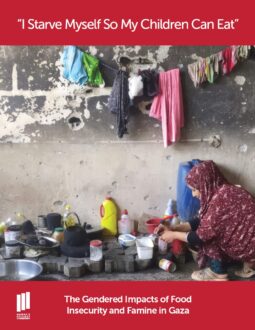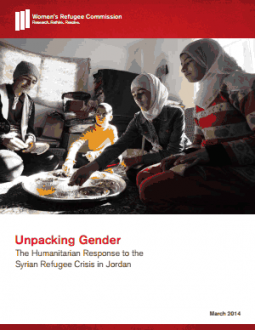
“I Starve Myself So My Children Can Eat”: The Gendered Impacts of Food Insecurity and Famine in Gaza
Published | UpdatedGaza is experiencing a man-made famine in plain sight. As of August 2025, 100 percent of Gaza’s population faced acute food insecurity, with nearly one in three Gazans projected to face famine conditions by the end of September 2025. The ever-increasing risk of famine in Gaza is a recurring and expanding reality, directly linked to Israel’s policies restricting the entry of aid, alongside a prolonged siege and destruction of agricultural and health systems. While every resident of Gaza faces acute food insecurity, women and girls experience unique risks of hunger and starvation.
This report documents the gendered impacts of Gaza’s food insecurity and famine crisis and provides actionable evidence for policymakers and humanitarian actors. Drawing on secondary data, key informant interviews, and testimonies from women, the report describes in detail the ways in which women and girls in Gaza are disproportionately at risk of hunger and starvation. The research also illustrates how aid blockades and militarized food distribution mechanisms systematically exclude women and girls. It concludes that Israel’s suppression of a professional humanitarian response, coupled with mass casualties and continuous forced displacement, exacerbates pre-existing gender inequalities in Gaza and has resulted in a psychological collapse that may last for generations.


